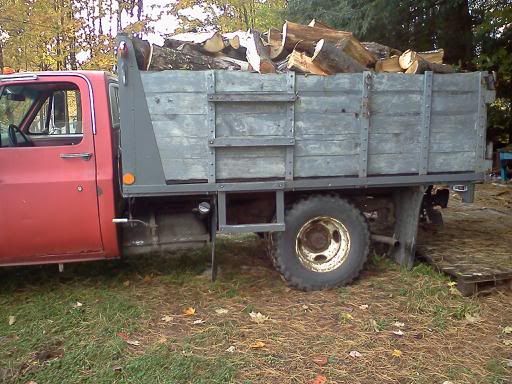cwalker
ArboristSite Member
So my question is, when you loose stack(just tossed in) split firewood in the back of your truck, how much space is lost.
Ive sold quite a bit of firewood, but had a customer call me back today few hrs after I dropped a load off for him and claimed I only delivered 97 cu/ft of wood. I guess he got to work stackin soon as I left.
My trucks box demension are 8x5.5x3 (wood sides) with plywood against the tailgate. works out to 132 cu/ft. Not much over a cord but my loads are generaly heaped above the rails and Ive always assumed it made up for the loss in the loose stack.
Is it possible im loosing a roughly a 1/4 cord to air space within the load?
And on a side note while i got ya thinking about the loose stack.....wondered this for sometime now.
Would larger or smaller pieces make a difference in how much would you can bring back in a load?
Big pieces -more wood per piece, less fit in truck, less but larger air spaces
Small pieces -less wood per piece, more fit in truck, more but smaller air spaces
Ive sold quite a bit of firewood, but had a customer call me back today few hrs after I dropped a load off for him and claimed I only delivered 97 cu/ft of wood. I guess he got to work stackin soon as I left.
My trucks box demension are 8x5.5x3 (wood sides) with plywood against the tailgate. works out to 132 cu/ft. Not much over a cord but my loads are generaly heaped above the rails and Ive always assumed it made up for the loss in the loose stack.
Is it possible im loosing a roughly a 1/4 cord to air space within the load?
And on a side note while i got ya thinking about the loose stack.....wondered this for sometime now.
Would larger or smaller pieces make a difference in how much would you can bring back in a load?
Big pieces -more wood per piece, less fit in truck, less but larger air spaces
Small pieces -less wood per piece, more fit in truck, more but smaller air spaces
Last edited:





